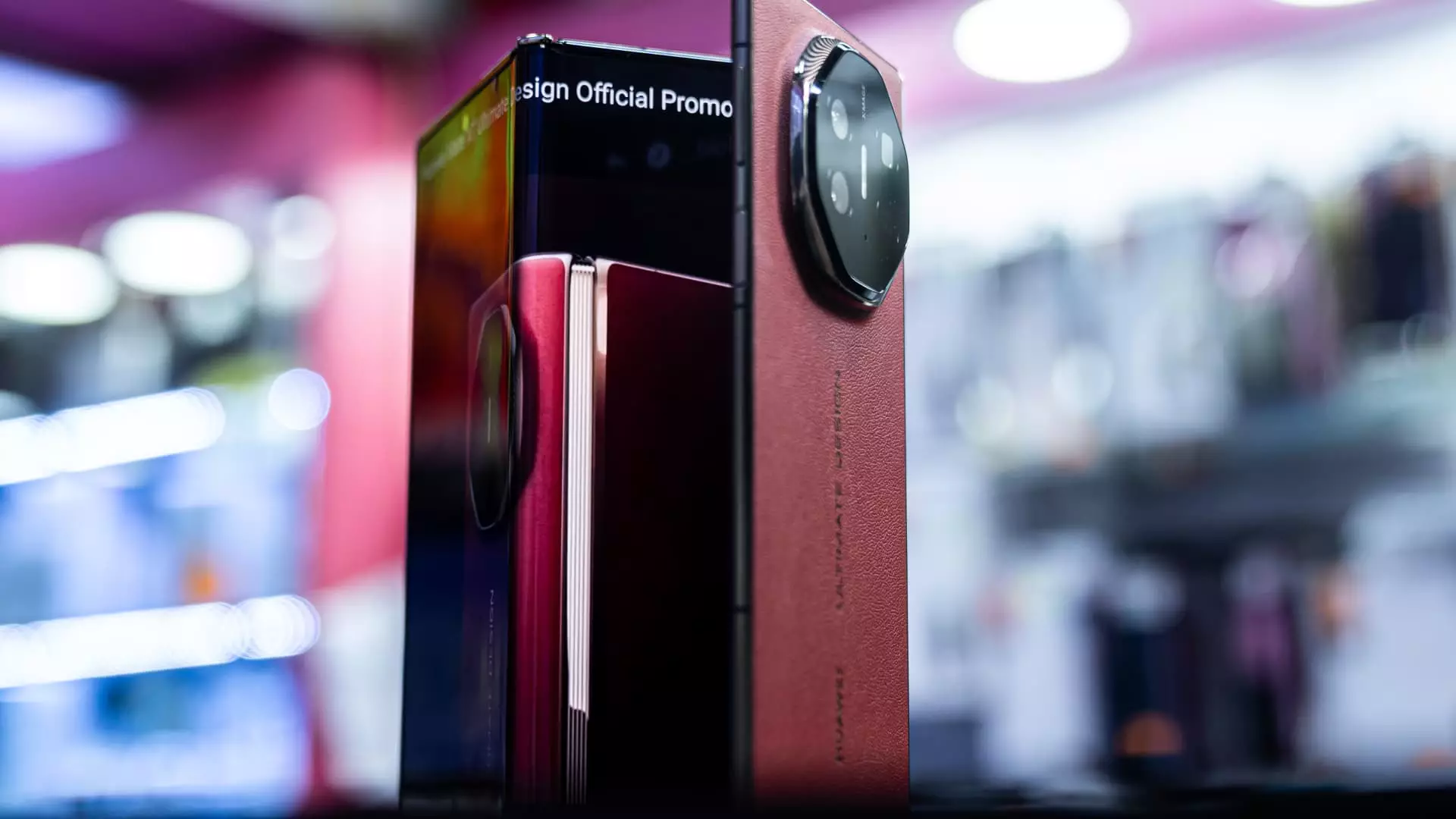In a remarkable financial feat, Huawei has reported a revenue of 862.1 billion Chinese yuan (approximately $118.2 billion) for the year 2024, showcasing a staggering 22.4% year-on-year increase. This figure, while the second-highest in the company’s history, falls short of its 2020 peak of 891.4 billion yuan. The narrative here is one of a company resilient in the face of adversity, trying to navigate a labyrinth of sanctions imposed by the U.S. government. Yet, starkly juxtaposed with this revenue growth is a 28% decline in net profit, which fell to 62.6 billion yuan. This raises pressing questions: Is Huawei’s growth superficial, resting on the thin ice of aggressive investment rather than sustainable innovation?
The dichotomy between revenue growth and declining net profit paints a challenging portrait of Huawei’s adaptive strategies. Investments in research and development soared to 179.7 billion yuan, constituting a hefty 20.8% of its total revenue. The company’s rotating chairwoman, Meng Wanzhou, voiced optimism, stating that teamwork has been pivotal in overcoming considerable external challenges. However, one must critically examine whether such investments are truly foundational or merely a reactionary measure to the tightening vice of U.S. sanctions.
Adaptation through Diversification
Huawei’s foray into diverse sectors, including AI data centers, cloud computing, and automotive technology, speaks volumes about its ambitions to pivot away from its traditional telecommunications roots. The company recognizes the need to invest in strategic depth amidst an economic downturn and to diversify its offerings to mitigate risks. However, this reactive maneuver could also signify a company struggling to maintain its once-dominant foothold in the industry. Despite the uplift in overall sales propelled by its leading ICT infrastructure and consumer businesses—accounting for 82% of total revenue—one cannot help but wonder if Huawei is genuinely innovative or merely fighting for survival.
The ICT infrastructure division, which brought in 369.9 billion yuan, witnessed only a modest 4.9% growth. This is a concerning signal, especially considering the significant investments made in deploying next-gen networks like 5.5G, intended to spur the next architectural leap in telecommunications. As 5G and its advanced form roll out, it becomes evident that Huawei is banking on these technologies, yet their slow revenue growth in this area suggests challenges ahead. Huawei remains one of the largest telecom equipment companies globally; however, will it continue to maintain that status in an increasingly competitive landscape?
Smartphone Revival or Mirage?
Perhaps the most striking story comes from Huawei’s consumer business, which saw a 38.3% revenue increase, amounting to 339 billion yuan. Following the devastation of its smartphone segment due to U.S. sanctions, Huawei managed a resurgence, shipping 37% more units in China. A notable semiconductor breakthrough allowed the company to reintroduce high-end devices that resonate with domestic consumers. However, is this revival genuine or simply a temporary demand surge, inflated by nationalistic fervor as consumers rally behind local brands?
Moreover, while Huawei’s market share jumped from 12% to 16%, this growth occurs within the confines of a shrinking pool—primarily at Apple’s expense. The notion that Huawei’s resurgence threatens Apple’s market position raises fundamental questions about the sustainability of such gains. The launch of groundbreaking trifold smartphones and the newly minted HarmonyOS 5 invites admiration, but they also present significant challenges: the lack of access to Android renders Huawei’s overseas expansion ambitions particularly tenuous.
The Road Ahead: A Hazardous Journey
As Huawei tentatively wades into emerging fields like digital power and automotive solutions, with revenues reflecting impressive growth—particularly in the nascent Intelligent Automotive Solution segment—one must critically evaluate the long-term viability of these ventures. Revenue metrics can be misleading; high percentage gains from a small base do not necessarily indicate a healthy growth trajectory.
The company’s digital power division, which aligns with global trends toward renewable energy, may position Huawei as a formidable competitor. Yet, the challenges remain colossal. Continual restrictions on accessing advanced chips hamper its ability to compete on equal footing with titans like Apple and Samsung, raising questions about how long they can maintain momentum.
Above all, the narrative of Huawei is one of dynamism under duress. The company has shown remarkable agility in the face of headwinds, yet the reliance on reactive strategies rather than strategic foresight casts a long shadow on its future trajectory. Will Huawei emerge as a phoenix from the ashes, or are these financial figures merely a mirage in a shifting landscape? The journey ahead is fraught with challenges, and as the ongoing tug-of-war with U.S. regulations intensifies, the verdict remains outstanding.

Leave a Reply